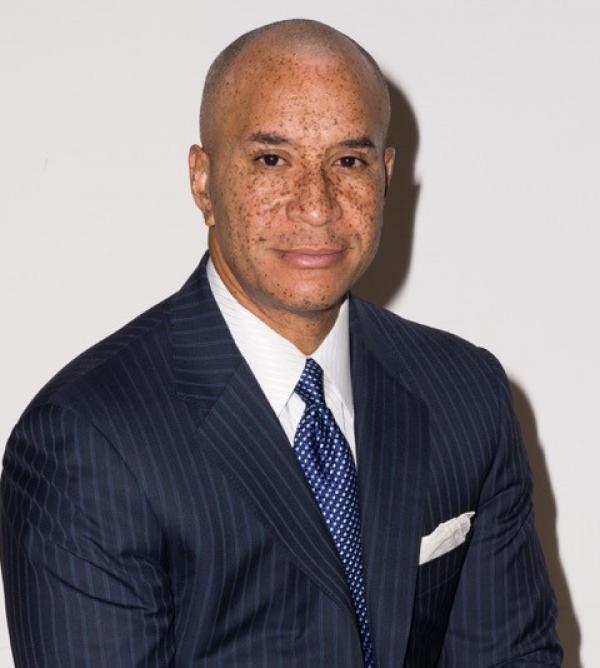In Episode 9 of Beyond Wall Street, Jan Brzeski talks with Lance Holman, president of Holman Capital about financing infrastructure for small cities and public agencies.
Jan Brzeski: I want to start with a quote that I read, which I think is very apt for today's talk, which is Howard Marks gave an interview recently on Yahoo Finance. And he said, "The best opportunities are not in the public markets." He said, "It's just too easy to access those investments." So I think we're going to be talking with you about a private market version of something that a lot of people have in their portfolios, which is public finance.
Jan Brzeski: What is the business of Holman Capital Corporation today?
Lance Holman: We finance the equipment, infrastructure facility and energy needs of state and local governments. Transaction sizes are smallest, 250,000, up to 100 million. But most of our deals traffic in the 1 to $30 million range with financing terms anywhere from 3 years out to 30 years. But most of our financings are 10 to 20 years. Our investors are primarily community banks that do not have a public finance department and effectively we become their public finance department. We originate the transaction, we underwrite it, we price it, we document it. And then we assign our interest or co-invest in that loan alongside the community bank.
Jan Brzeski: So this is related to municipal bonds, I believe. Many people like to hold bonds in their portfolio. And among the most popular are these state bonds and local government bonds because they're double tax-free in California, no federal tax, no state tax. So what you're dealing is quite closely related to that, but it's not publicly traded. Can you explain a little bit more the relationship between municipal bonds and the kinds of loans that you're making?
Lance Holman: If you compare them side by side, the similarities are, they both lend money to the government, they both finance the infrastructure. The differences are the players involved. In a municipal bond, you have a lot more people involved in a transaction. You have a rating agency, you have a trustee, you have an underwriter, you have ongoing disclosure and you have a financial advisor. Well, that entire team financing professionals has to be compensated. And so it comes out of the yield that the investor otherwise would have received. But if you do a loan, then you don't need a rating agency, you don't need a trustee, an underwriter, a financial advisor, and you can go direct and the investor will now be able to get a higher yield. But to be able to do that, you still need someone with the expertise and the relationships and the commitment to originate the transactions and properly underwrite them. And that is our role. So we are in the middle, acting as the guardian for the investor to search and underwrite and place those transactions for the investor.
Jan Brzeski: Let's go through a specific example. Could you talk about a loan that you were involved in recently and give us a profile, what was being financed and some of the other details?
Lance Holman: There was the deal, it was $30 million for a city here in California. The city wants to build a new water treatment plant. The city would like to finance that project over a given period of time. And we come in, and along with our strategy of finding a way to structure the deal that is in the best interest of the municipality, but also in the best interest of the investor. And then we have streamlined the documentation. So we literally have automated all the legal documents. We push a button and all of our contracts were done in literally, 45 seconds. And now we have eliminated the need for the high price legal counsel. We have underwritten the deal, we have eliminated the need for that rating agency. And we price primarily off treasuries, which most fixed income instruments are priced off of. So we price off the treasuries and we have a spread above the treasuries, and we want that spread above the treasuries to be attractive enough for the investor to get their return and then attractive enough for the municipality to efficiently fund their project.
Jan Brzeski: So you have a loan that you originate and it's financing a water treatment plant. Is that for a city or a county in California?
Lance Holman: It would be for a city or a water district.
Jan Brzeski: Is it guaranteed by anything beyond the revenue of that facility? Is the state, the city or the water treatment district backing that credit?
Lance Holman: Legally, the municipality's cash flows, the ability to charge the rate payer a rate for that water is backing it. So as long as people in that coverage area need to drink water or need to use water, they will buy from that public agency. The public agency is, at the end of the day, is a natural monopoly. No one else is out providing the water, the police and fire, the city services. So it's only one place to go. And since you need large infrastructure to deliver these services, cities have become that place. And so therefore, they have the ability to raise the price of the water if necessary, to cover their operating expenses, plus any debt service.
Jan Brzeski: So if this were a water treatment plant for the city of LA, they would probably issue a bond for it. And maybe instead of 30 million, it would be 300 million and they'd issue a public bond, is that how they would finance it in a big city like LA?
Lance Holman: That's right. So if you go to a big city like Los Angeles, then you're probably better off with the bond. Meaning the municipality is, because their cost of borrowing could go down. But if you're a small or a medium-sized city and you're looking at a $30 million transaction, you're probably better off with the loan and that's who we target.
Jan Brzeski: These niches that are harder to find and a little bit off the beaten path are where you can get more attractive returns, and gosh, there's hundreds and hundreds of small cities and counties around the US that also need a water treatment plant. It's not just the Los Angeleses of the world that need that. So you really have a very large market that you're serving, right?
Lance Holman: Yeah. There are about 130,000 municipalities in the United States. They spend about four trillion dollars a year. So it's big business. Now, you've had to identify each of the decision makers and then you develop marketing campaigns and you go out and meet with them, and then you show them how they can procure their assets more efficiently, and then subsequently finance those assets more efficiently as well.
Jan Brzeski: For the water treatment plant, what's the maturity of that loan going to be in that case? Is it 20 years or something else?
Lance Holman: That's part of our strategy. In a traditional bank, they would show a 30 year loan and it had to be a fixed rate. So you have a fixed coupon for 30 years and you'd have a 10-year, no call provision in that structure. In our strategy, we basically lock in the rates for 30 years, if that's what they want, but then we also show them that they can lock in for 10 years at a time. And we reset the rate every 10 years. And by doing that, in general, you're going to cut the financing term down from 30 years to roughly 22 years. Now, the investor still gets a higher 10 year rate. And then at the end of 10 years, the rate resets. Rates have been pretty stable the last 10 years, so you should expect that the coupon should be consistent to what it was before, but there's no guarantees.
Jan Brzeski: There are some advantages of investing in this, versus investing in bonds, municipal bonds. What type of return advantage can I get by investing in these loans instead of bonds that are backed by these types of loans?
Lance Holman: The bonds will pay you about 1 to 3% tax-free, these loans will pay you about 2 to 4% tax-free for the same municipality. So it's the same credit, it's just that with the loan, you don't have all these other outside market participants involved like law firms, the rating agencies, trustees, and underwriters. You don't need them in a loan, the deal is smaller. And by removing them from the cost equation, the yield to the investor rises. And for the borrower, we can fund the transaction in 30 days. So if you can be quicker, you can be accurate and you can target the right client and show them by financing quicker, they can lock in their project costs quicker. Then you're saving the municipality money and you're getting a higher yield for the investor.
Jan Brzeski: One of the attractions of bonds, obviously, publicly traded bonds is that they're liquid, especially municipal bonds generally are pretty liquid. Although I know these smaller agency bonds may not be as liquid, but you were saying that the loans that you're originating are also saleable, there is a secondary market for them. Is that right?
Lance Holman: That's right. It's a very active secondary market. This business is dominated by the largest banks in the world. So if you can imagine JP Morgan, US Bank, Bank of America investing in municipal bonds, well they're also investing in municipal loans. So for years, those banks originated those loans and traded, and then sold those loans back and forth to each other. And that's what they currently do today. What I did was I went to a new group of investors, the community banks, and created an entirely new market. And now those banks are now buying and holding that paper for the term of the financing and generating the yield from that investment. But if they wanted to sell, they could sell to another community bank or they could sell to Bank of America or JP Morgan or anybody else, or any other individual investor as well.
Jan Brzeski: Do you think that this asset class will end up in the portfolios of wealthy individuals? Or do you think that it naturally sits on a bank balance sheet long-term?
Lance Holman: The evolution of the business is to move from the bank balance sheet to a hybrid of also individual investors. So if you had a very wealthy investor who had $20 million to invest, then I would be happy to talk to them, because my deals are between, again, 1 to $30 million, so we could create a portfolio for them. But let's say you had an investor that had $5 million of discretionary capital. Then our next step is to create a fund for those investors. So instead of that investor putting their money in their checking account and getting zero, now they can get 2 to 4% tax-free by putting it into this loan and having those funds paid directly to their checking account.
Jan Brzeski: How long would I need to invest for before I would get my principal back in this type of investment?
Lance Holman: It can be anywhere between 1 year to 30 years, but most of the transactions are between 10 to 20 years, but it pays like a mortgage on your home. And so you're going to get back half your principal in roughly 50% of the time. So you're looking at, if you do a 10 year deal, you're getting it back in 5 years, if you do a 20 year deal, you're getting it back in 10 years, half of the principal.
To hear the rest of the interview: https://beyondws.com/interviews/episode-9-financing-small-cities-counties-and-other-local-government-institutions
About the Authors:
Jan Brzeski founded Arixa Capital in 2006 and serves as Managing Director and Chief Investment Officer. In this capacity, he has ultimate responsibility for the Firm’s investment strategy, risk management and operations.
Mr. Brzeski has extensive experience with every aspect of real estate investment. He has participated in more than 1,700 real estate transactions, investing over $1.8 billion on behalf of Arixa’s investors and partners. Since he founded Arixa Capital, it has become one of the West Coast’s premier non-bank real estate lenders, providing small balance loan solutions to lower middle market residential and commercial investors and developers. Prior to founding Arixa, Mr. Brzeski was Vice President of Acquisitions at Standard Management Company (SMC), a Los Angeles-based private real estate investment firm. During his tenure at SMC, he underwrote, negotiated and originated equity and debt real estate investments across all commercial real estate asset classes. Prior to SMC, Mr. Brzeski was Co-Founder and CEO of STV Communications, Inc., a media services company that provided web broadcasting and hosting services that delivered music, movies, television, radio and other content to the Internet. Mr. Brzeski began his career as an Investment Banking Analyst at Goldman Sachs, where he contributed to initial public offerings, secondary stock and bond offerings, and mergers and acquisitions of leading technology companies.
Mr. Brzeski received his Bachelor of Arts in Physics from Dartmouth College and his Master of Arts in Philosophy, Politics & Economics (PPE) from Oxford University. He is a regular speaker, moderator and panelist at various industry conferences and events. Over the past 15 years, he has organized an annual Real Estate Investment Roundtable at UCLA’s Anderson School of Management and is also a regular guest lecturer there. Mr. Brzeski is proud to support two non-profits: Global First Ladies Alliance and Hope in a Suitcase.

Lance S. Holman President & CEO Holman Capital Corporation and Holman Capital Equity Partners provides debt and equity capital to fund the equipment, facility, energy and infrastructure needs of federal and state and local governments nationwide. Holman Capital Corporation delivers ideas and capital to public agencies to improve operational efficiencies, modernize facilities, and improve cashflows. Mr. Holman has also held management positions with US Bank, Banc One Leasing Corporation, Ford Motor Credit, SunTrust Leasing and Finance Corp. in fixed income sales and trading, global product strategy, and public finance. He has over 28 years of experience in financial product development, capital deployment, and institutional investments. Mr. Holman graduated from Indiana University with a B.S. in Public Finance in 1988 and the University of Colorado with a MBA & M.S in Finance in 1993 and a B.S. Mr. Holman resides in Orange County, CA.





